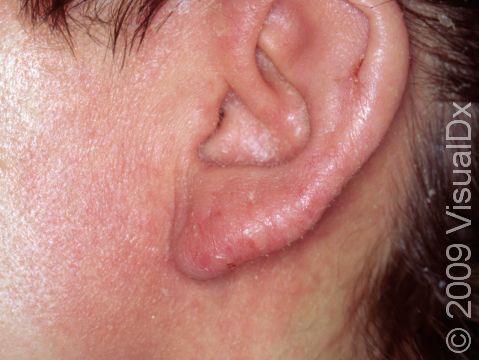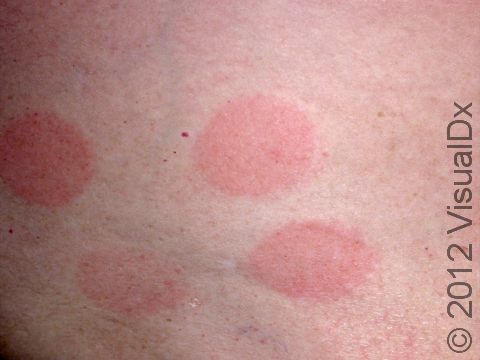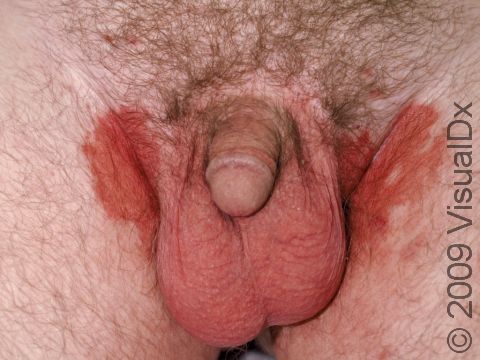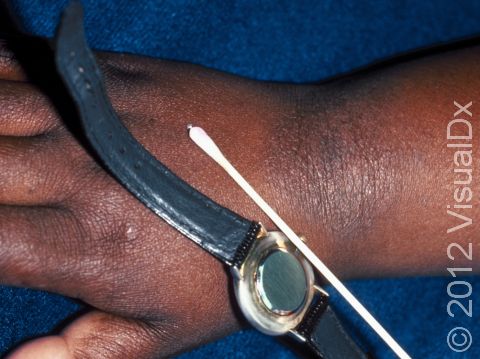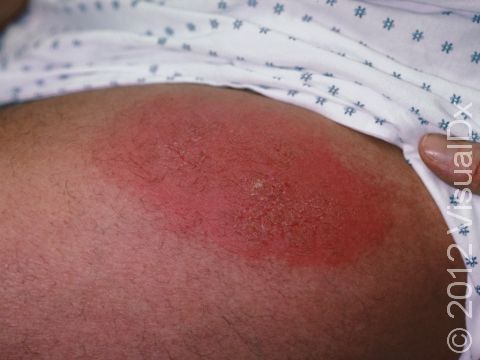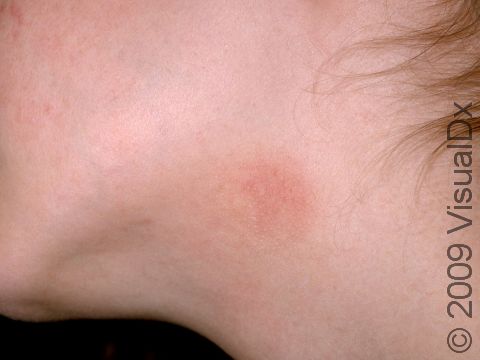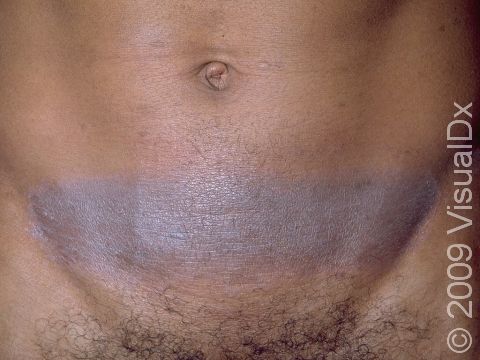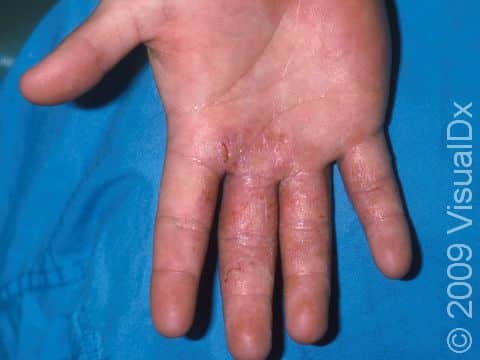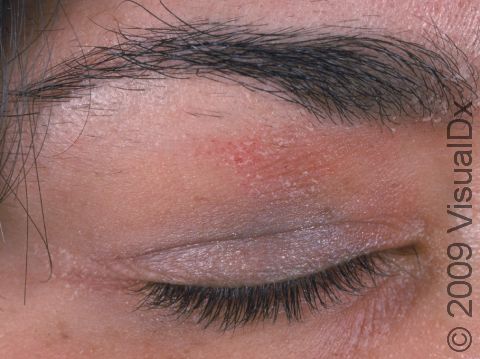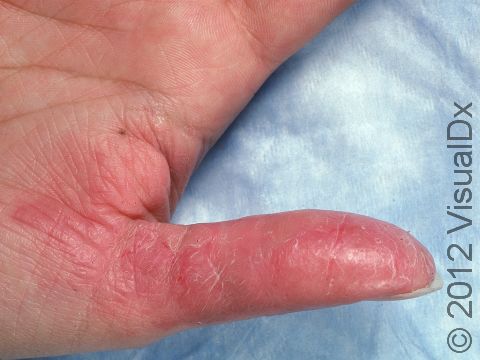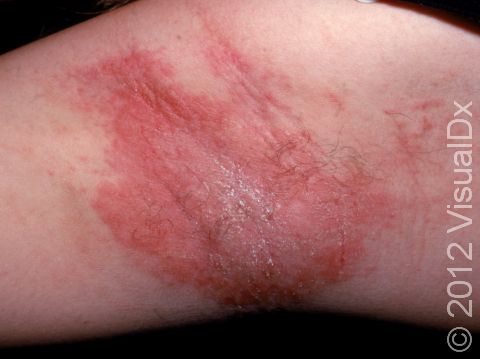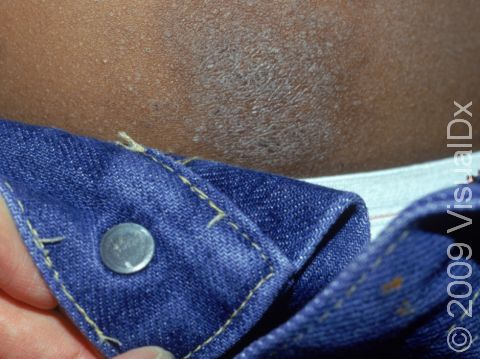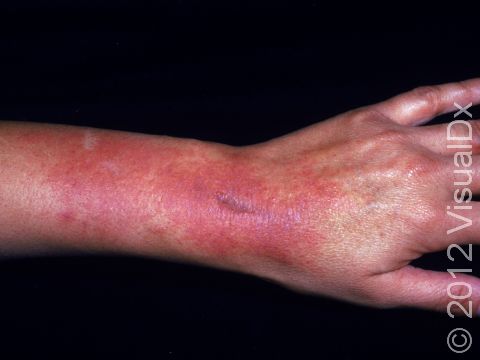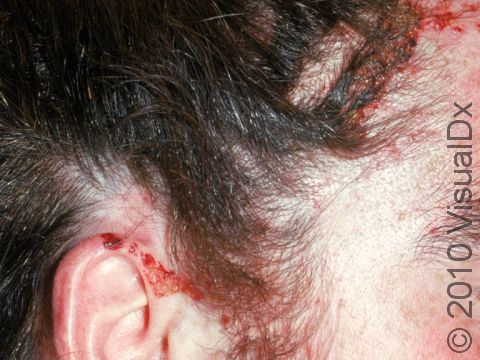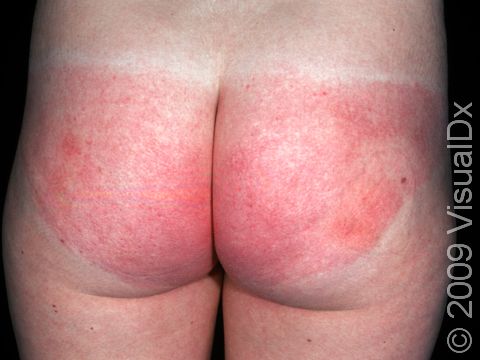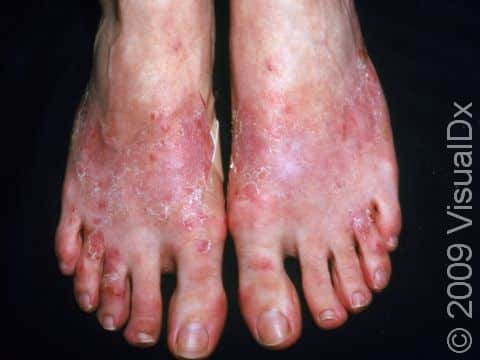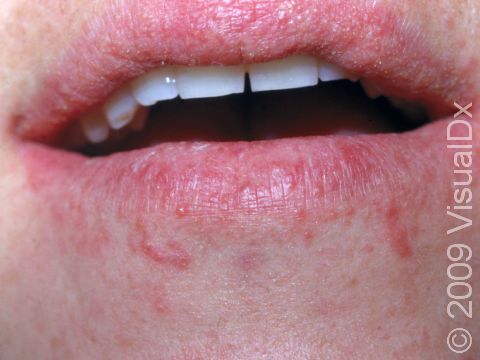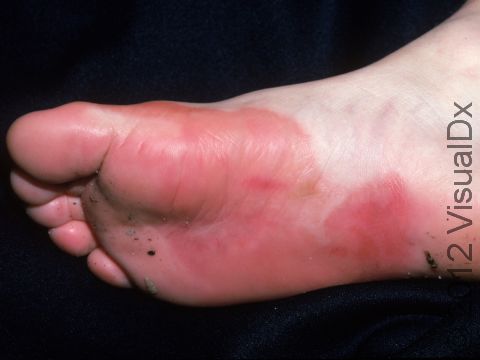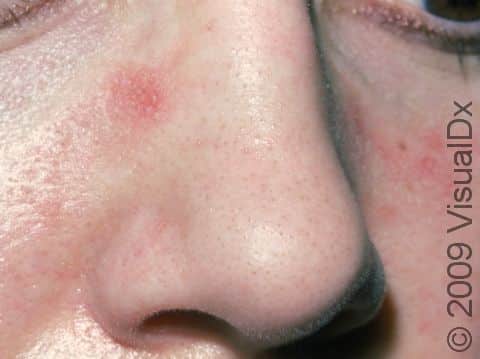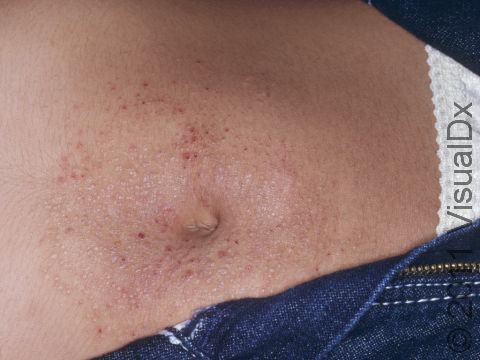Allergic Contact Dermatitis
Allergic contact dermatitis is the medical term for a very common rash that occurs when the skin is exposed to any number of irritants (ie, substances or surfaces that bother it) and becomes inflamed. In allergic contact dermatitis, the rash usually appears 48–72 hours after the exposure is made, which can make the diagnosis difficult as the irritant culprit is not always obvious. The skin tends to become red, raised, itchy, and dry looking. Some very common irritants (though there are many more than on this list) include nickel (a metal found in earrings, other jewelry, and the metal closures on clothing), chemicals used to tan the leather used in shoes and sandals, latex (including gloves and condoms), antibiotic ointments, soaps, cosmetics, and dyes. Someone can be in contact with one of these things for years and suddenly develop an allergic contact dermatitis. The best treatment is to identify the offending agent and avoid it; your doctor can also prescribe a steroid-based cream to help the rash go away more quickly.
Who's At Risk?
Anyone of any age can develop an allergic contact dermatitis. People with sensitive skin and people with other allergies are probably more likely to be troubled by this kind of rash.
Signs & Symptoms
Allergic contact dermatitis may occur on any location of the body.
- Scaly red to pink areas of elevation (papules and plaques) and blisters (vesicles) may be seen. Individual lesions have distinct borders and often have a geometric shape with straight edges and right angles.
- Eyelid swelling is frequently seen when the allergen is unknowingly transferred from finger to lid. Affected areas are typically severely itchy.
- When the allergic contact dermatitis is long-standing, the areas of elevation become thick and secondary bacterial infection is possible.
Self-Care Guidelines
- Avoid the offending agent.
- It may be helpful to avoid common triggers such as fragrance, lanolin, nickel, etc.
Treatments
Treatment is aimed at preventing contact with the allergen.
- Symptomatic control of itching may include oral antihistamines.
- Medium- and high-potency topical steroids may be prescribed for rashes occurring on the extremities or trunk.
- Mild-potency topical steroids may be prescribed for thinner skin on the face and skin fold areas.
- In severe cases involving large body areas, a 14-day course of an oral steroid (prednisone) may be prescribed.
Visit Urgency
Seek medical evaluation for a persistent or recurrent rash of unknown origin. Your physician may perform allergic contact patch testing. Skin biopsy is sometimes used to confirm the diagnosis.
References
Bolognia, Jean L., ed. Dermatology, pp.227, 252-256. New York: Mosby, 2003.
Freedberg, Irwin M., ed. Fitzpatrick’s Dermatology in General Medicine. 6th ed, pp.266, 1164-1165. New York: McGraw-Hill, 2003.
Last modified on August 16th, 2022 at 2:45 pm

Not sure what to look for?
Try our new Rash and Skin Condition Finder
